Tramping with a baby is entirely possible, despite what you might have heard to the contrary! This article covers all the tips and tricks I found helpful for getting out tramping during my little adventurer’s first year of life.
When I was pregnant I knew that I still wanted to get out on adventures once baby arrived. Luckily I had plenty of role models who were already doing exactly this with their little ones. Here are some kiwi accounts that showcase family adventures:
- Sonia (Back to the Wild) who also has an amazing blog on tramping with babies
- Shoshannah
- Jen (Backyard Travel Family)
- Viktoria De Dominici
- Victoria Bruce (Adventures with Emilie)
- Gerlach family (Noodles for Brekky)
- Aisling & Sawyer (Bustsaw Adventures)
- Hami Tangiora
And so many more! Thank you from the bottom of my heart for helping break stereotypes of what being a new mum / dad / family looks like, and making it easier for me to pursue my adventure dreams. I’ve managed some pretty awesome trips with Little A in her first year. Thanks for lighting the way <3
If you haven’t already, I’d recommend checking out my tramping while pregnant blog post packed full of helpful information, and my birth story (it’s a positive one). I’ve also written about a miscarriage I experienced while tramping before Little A was born.

Just a heads up that some of the links in this blog post are affiliate links – meaning that if you purchase an item, I get a referral fee at no extra cost to you. I only recommend items that I truly endorse, so if you decide to purchase then thanks so much for supporting me and the blog!
Right, let’s dive into it!
Table of Contents
What gear do you need to take tramping with a baby?
It’s an inescapable truth that you need to carry more gear when tramping with a baby. But the good news is that you don’t have to pack the kitchen sink (or that fancy baby bath).
Clothes
Babies are more susceptible to both cold and heat, and can’t easily regulate their temperatures, so natural fibres like merino are best. You can check the skin on their back or chest to ensure they’re not too cold or hot. Always pack at least one extra change of clothes (or more depending on bubs), as they’ll for sure have a blow out when you least want it. Here are some layers you might need to pack depending on the forecast:
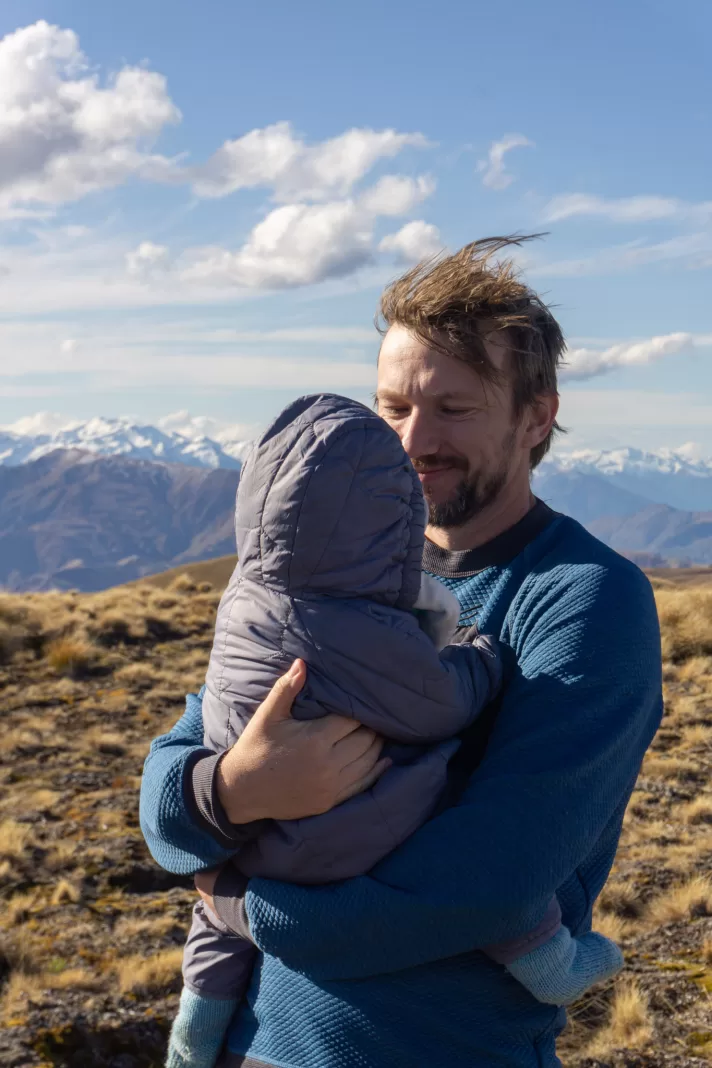
Top: merino bodysuits, these Milly & Milo merino hoodies from Farmers are great (+ they often go on sale) as are these fleece jerseys from Macpac. For winter or when it’s really cold, puffy baby snowsuits like this one or fleece onesies are perfect. (Be aware that fleece is usually synthetic and therefore can lead to overheating as its not as breathable as natural fibres. It isn’t recommended for sleeping for this reason).
Bottom: merino tights / pants, layering as needed (footed pants are great for extra warmth when baby is little).
Head: hoods from clothes + woollen knitted hat or sunhat.
Hands: fold-over mittens from clothes + knitted woollen mittens, socks.
Feet: Lamington knee-high merino socks (they actually stay on!), knitted woollen booties or sheepskin booties.
If you’re after fantastic waterproof baby & toddler clothes, you can’t really go past Therm – their quality is next level. PLUS I’ve got a discount code to give you 10% off – ALICEADVENTURING.
You also don’t have to buy new – at this age babies grow out of clothing far quicker than wearing it out, so you can often pick up great finds on places like Facebook marketplace or various groups (e.g. NZ Buy/Sell Merino). I’d highly recommend searching for second-hand pieces before buying new.
Nappies
I know some mums use cloth nappies + elimination communication very effectively at home and while tramping. Although I use cloth at home, I still use disposables when tramping due to concerns about ammonia build-up and my wash routine, but the downside is having to then carry the heavy used nappies back out.
A light-weight change-mat or sit pad is super helpful for keeping baby off wet or cold ground.
Sun and bug protection
Babies’ skin is more sensitive to the sun than ours, so ensuring they’re kept in the shade or are wearing a baby-friendly sunscreen (I like to use Back to the Wild) is essential. Same goes for bug spray, I use this one that is baby-safe, but honestly sometimes the easiest way to manage bugs and baby is to keep moving, get into the hut / tent, or have someone waft baby’s face.
Extras
If baby is having milk still then packing a small sit-pad and / or tarp is very helpful to keep you dry. Extra food and water is also helpful if you’re breastfeeding as you’ll likely already know!
I never bothered taking toys for Little A in her first year, there were plenty of things around the hut she found more interesting anyway (empty dehy dinner bags were a big hit). I add a small amount of pamol + syringe in my first aid kit in case of teething or fevers.
Food, baby carriers & sleep set-up
These are covered in more detail lower down, so keep reading!
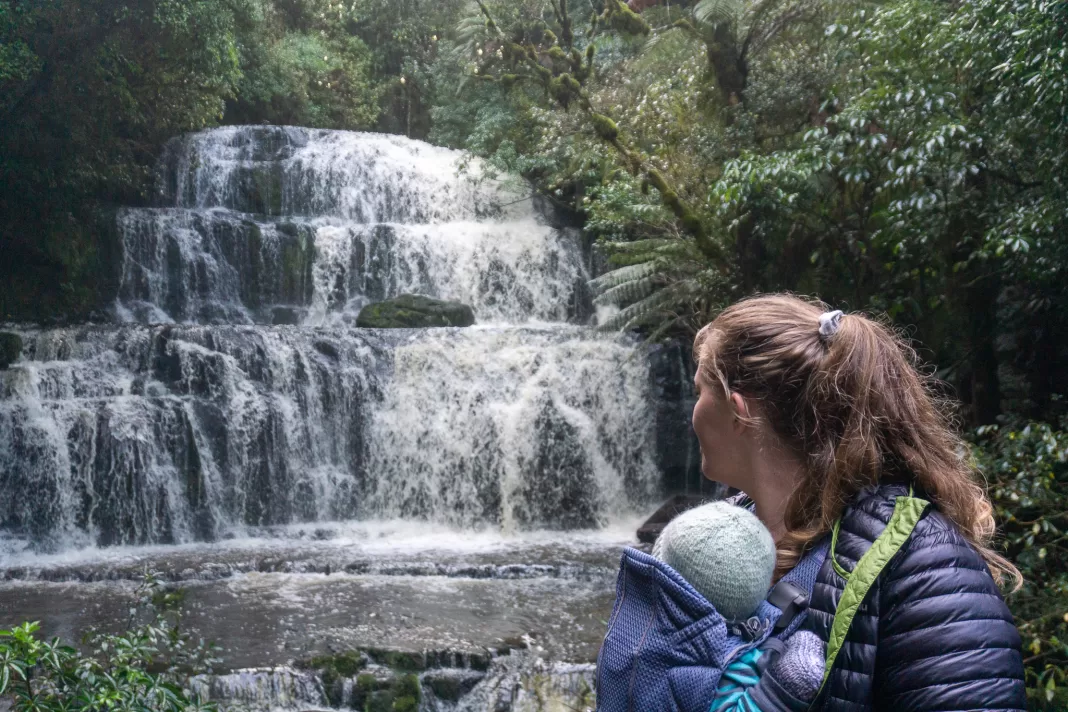
What are the best baby carriers for tramping?
This answer will depend on the age of your baby, your own personal preference, and (most importantly) baby’s developmental stage. People often start with wrap or soft carriers from newborn, and then progress to backpacks one baby is six months or older.
Regardless of what carrier you’d use, I’d recommend using hiking poles to help with stability and distributing weight more evenly for your joints.
Wrap
Baby wraps are great for newborns all the way up to toddlers. I was given a Moby wrap which I loved using right from when Little A was just a week old.
Benefits:
- Can be used right from newborn age
- Lightweight
- Great way to help baby get to sleep when they’re still adjusting to the big wide world
- Easy to check on baby in front of you
Disadvantages:
- Can be intimidating to start with (I’d recommend checking out Cassidy’s account where she showcases lots of different ways to babywear)
- Less comfy than a soft structured carrier or backpack carrier
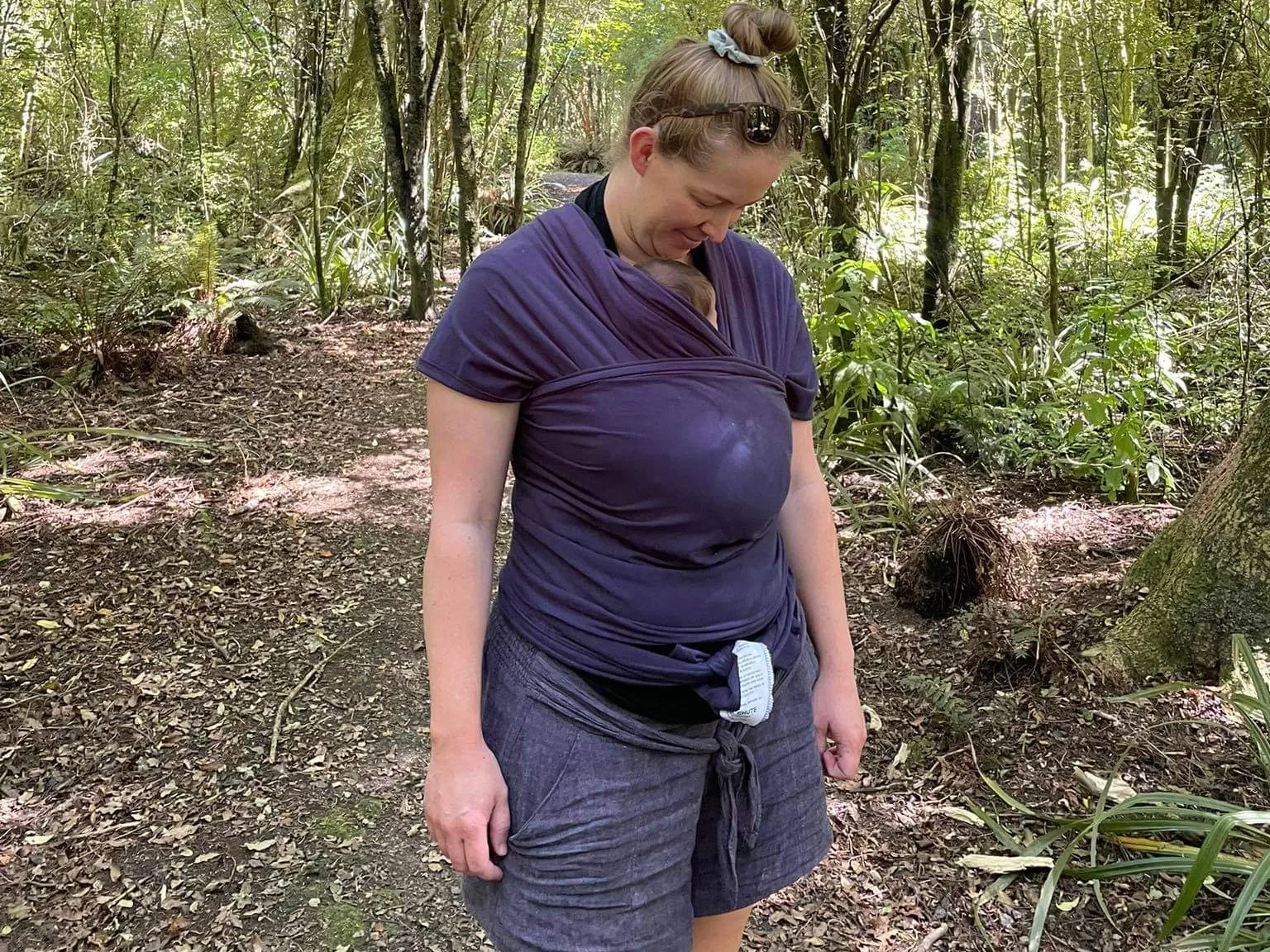
Soft structured carrier
There are plenty of options when it comes to soft structured carriers, it really comes down to your own personal preference. I was given a Baby Bjorn Air as a gift which I’ve loved using. Many people also recommend the Ergobaby 360 carrier too. I’d recommend trying a few out if you can before buying.
I’ve used my soft carrier on many tramps. It was the only carrier we took on our Europe trip when A was seven months old, which involved lots of day hikes. I paired it with a babywearing jacket from Wombat & Co which I found helpful to shield A from the wind and keep off light drizzle (use code Alice10 for a discount).
Benefits:
- Possible to use from newborn (depending on the carrier)
- Often has multiple ways to wear baby (e.g. can back carry once 6 months+)
- You can tandem carry a tramping pack with baby on front (more room than a backpack carrier alone)
- Easy to check on baby in front of you
- Lightweight and easy to pack
Disadvantages:
- Less comfy for longer trips that a backpack carrier (in my experience)
- Restricted view of your feet if front-wearing
- Baby doesn’t get as good of a view compared to a backpack carrier
- Have to use a babywearing jacket or similar for weather protection
- Pricey

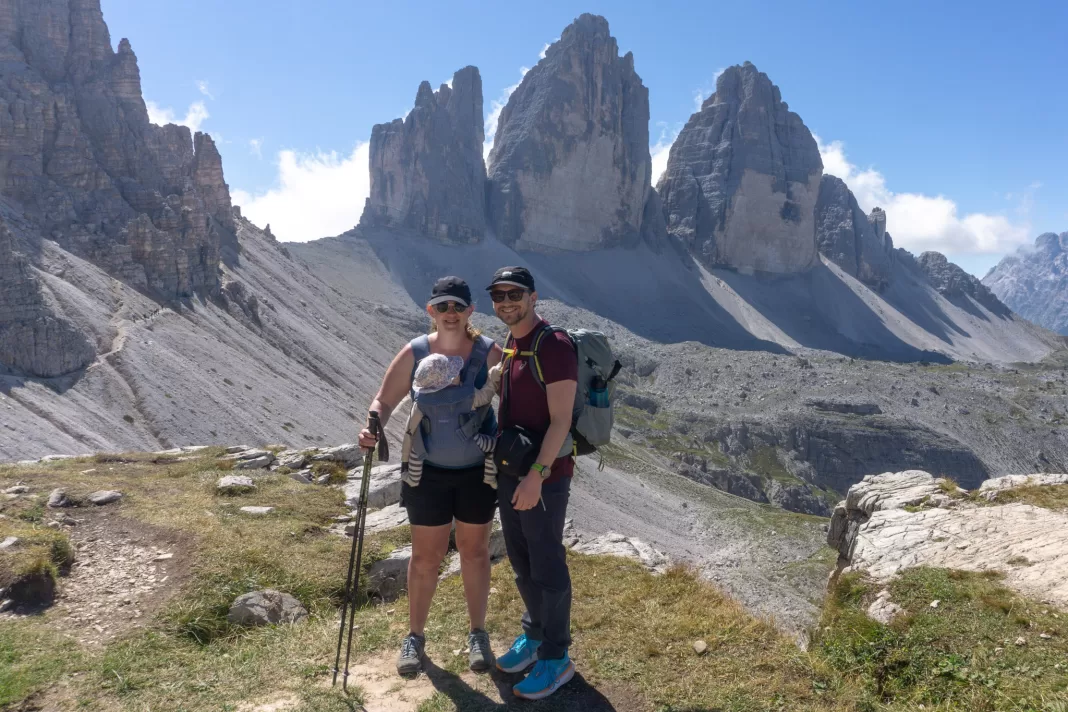
Backpack carrier
A backpack carrier is one of the comfiest ways to take baby on adventures in my opinion! The best backpack carriers are either the Deuter Kid Comfort (comfier) or the Osprey Poco Plus (more storage). We bought a Poco when A was eight months old and I love it!
Benefits:
- By far the comfiest way for both parent and baby on longer trips – A loves riding on top and being able to see everything
- Can see your feet – I climbed up to Lake Crucible wearing the Poco which is incredibly steep (photo below)
- Built-in sun and rain/wind protection
Disadvantages:
- Age restricted – can’t use until baby is 6 months old or able to hold up their head for long periods of time
- Can be more expensive than most soft-carriers
- Less room for gear than using a soft carrier + tramping pack
- Heavier than a wrap or soft carrier
- Bulky when packing in the car
- More difficult to check on bubs, they can get cold easier since they don’t share your body warmth
- Pricey
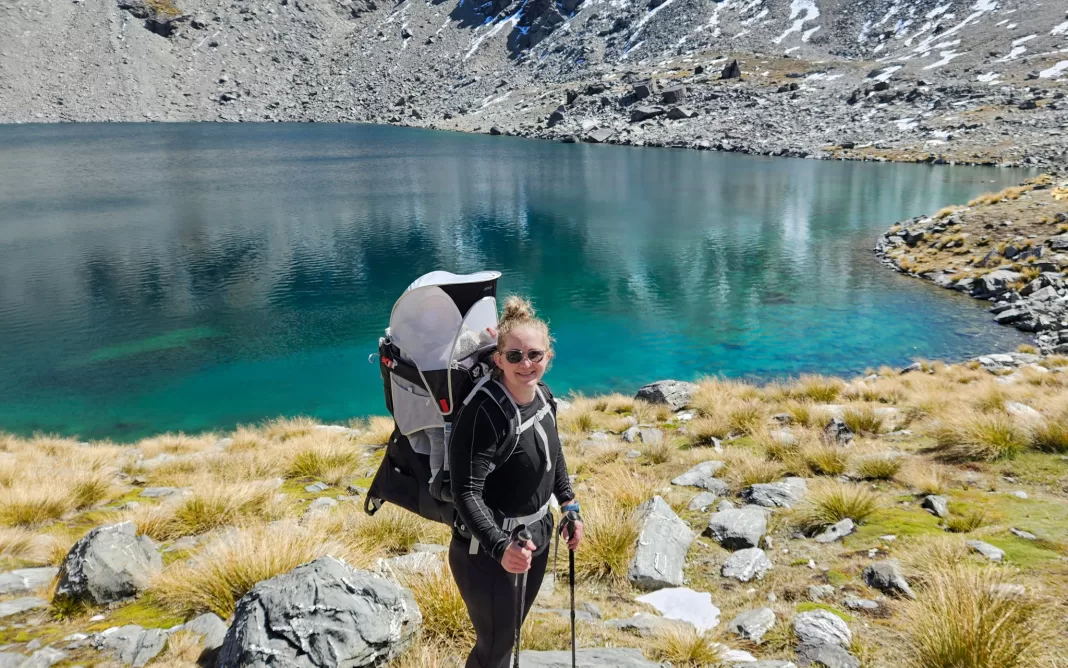
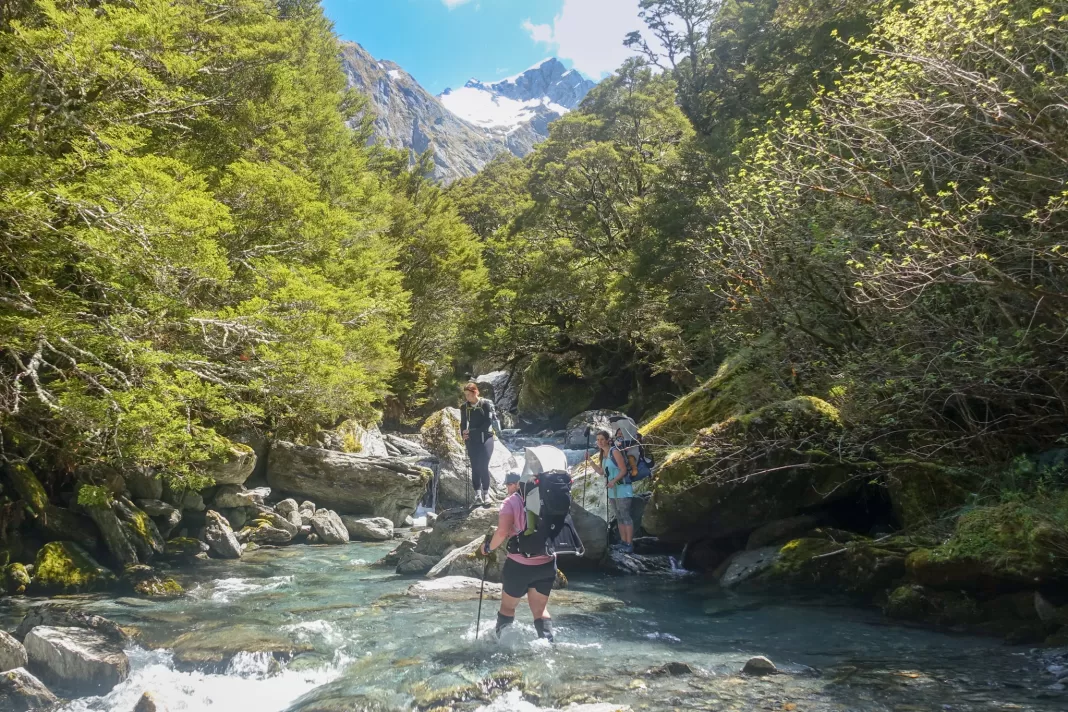
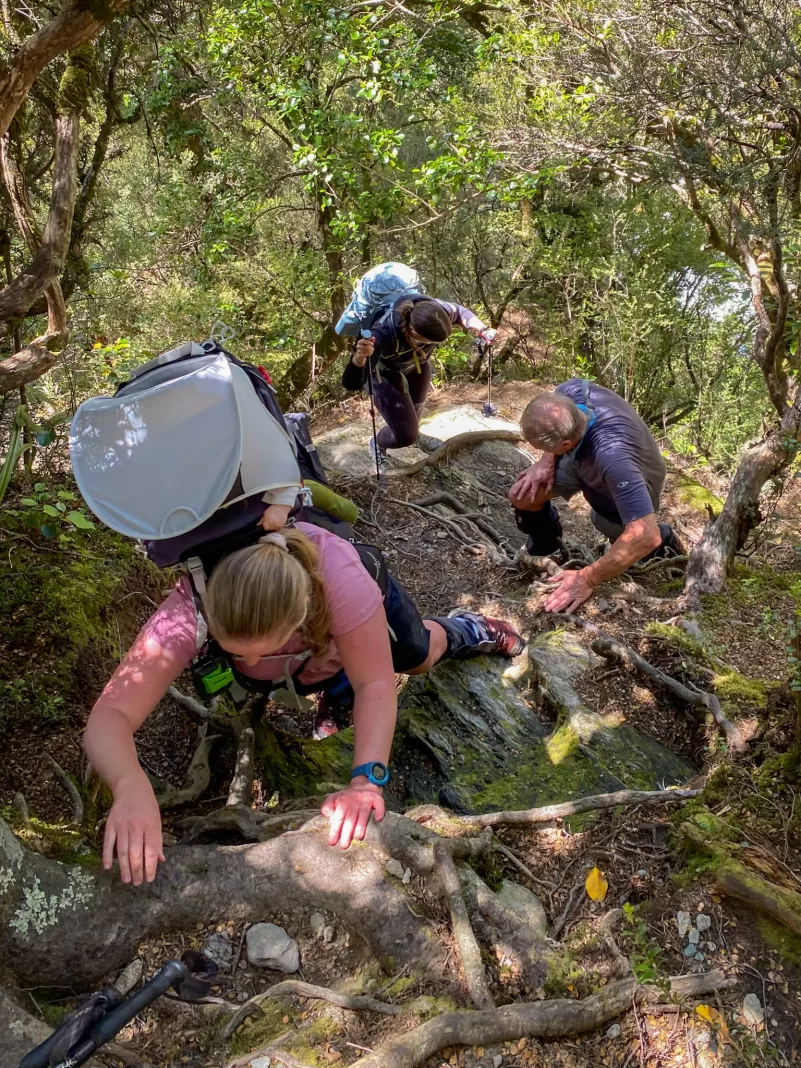
How do you get started tramping with a baby?
I felt so unbelievably overwhelmed becoming a parent for the first time. I remember wondering how on earth I’d ever be able to get out of the house again, let alone go on a hike (let alone go on an overnight hike!).
But you do adjust to your new normal, and things do become easier in time. Tramping with a baby is definitely doable, but like anything I’d recommend starting small and building up, especially if you’re feeling anxious (which is entirely normal as a new mum, never feel bad for worrying about your baby).
Start with a short walk around the block from your house. Then drive somewhere close by and do a small walk. Then maybe somewhere slightly further away, or a slightly longer walk. Then plan some hikes that you’re familiar with and are happy taking a baby on, then go from there!
Alternatively, if your priorities change and tramping is no longer a passion once you welcome a new person into the world, that’s completely fine too. If we never changed we’d be incredibly boring. You’ll find other things that light your fire!
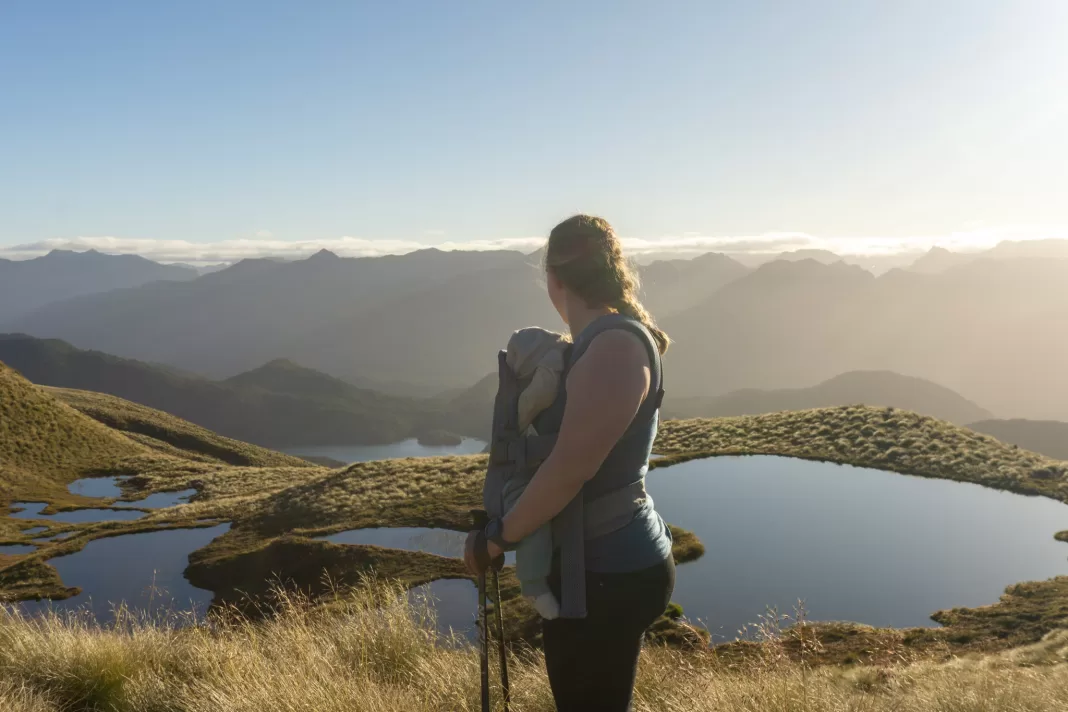
What do you feed baby when tramping?
Before the age of six months, baby typically only has milk so you don’t have to worry about food until they’re 5-7 months+.
Breastfeeding
Although I have a bit of a love-hate relationship with breastfeeding, I have to admit it’s super easy when tramping. There isn’t anything extra to pack, warm milk is on tap whenever needed, and it’s very easy to soothe baby back to sleep quickly in a shared hut.
If you’re already breastfeeding then there aren’t really any extra considerations you need to take, other than making sure you have something to sit on, and enough food + water. You can buy fancy merino and fleece breastfeeding clothes, but equally you can just pull up your exisiting tops.
Bottle feeding
Because I don’t have any experience with bottle feeding (despite my best attempts), I asked Shannon from Restless Crusade for advice. Shannon and her partner Tyson have travelled all over the world pre- and post-kids, including trekking to Everest Base Camp with their four year old twins!
If you are backpacking with your baby who is under eight weeks old, I suggest you use ready-to-feed formula. Just twist off the cap, put a nipple on it, keep it close to your body to warm it, and then it’s ready to go.
Once baby is over eight weeks, you can use powdered formula. If you’re day-hiking you can bring enough water from home in a separate water bottle and mix it with the formula along the route. We bring powdered formula in a ziplock bag along with the scoop.
Everyone has different levels of risk that they are comfortable with when it comes to water quality, but we used the same filtered water from the nearby lakes and streams that we drink to mix the formula. Once you are at the campsite you can boil the water and let it sit to cool. Then it’ll be ready for when you need it next. This way you can refill the water bottle for your next day trek as well.
Thanks so much Shannon for this info! Make sure to check our the Restless Crusade blog.
Baby food
Once you’ve started to introduce solids at home, you’ll need to start packing food for bubs as well as yourself. If they’re on puree foods, I found the Norish puree range to be great – it’s freeze-dried powder so super lightweight while still really nutritious. Weetbix with warmed up water or milk (from powder) was also easy and light for breakfast.
If baby is past the puree stage or you’re following a more baby-led weaning approach, then packing food that you normally would give at home is easiest even if it is heavier – fruit, cooked veggies, crackers. If you have something that needs to stay cool (e.g. yoghurt), freeze some water in one of your drink bottles and place the food next to it in your pack (wrap the bottle and food in something that can contain the condensation from the thawing bottle).
It should come as no surprise that it’s not a good idea to test common allergen foods in the backcountry. Leave these foods at home if you’re haven’t introduced them to your baby yet. Also remember that other babies you’re hiking might not have been exposed to some of these foods either (even if your baby has), so be mindful when packing allergens in general (e.g. peanut butter).
I’ve found that baby often seems hungrier in the mountain air even if they’re only sitting in a carrier and not moving much. Make sure you pack more food than you need, you don’t want to be caught out with a hangry baby! And don’t forget a bib and re-useable wipes to help with the mess.

How does baby sleep in a hut / tent?
Everyone is different when it comes to sleep and what works for them, just like every baby is different. Here’s what has worked for us.
What does baby sleep in?
On Little A’s first overnight hut stay we 4WD in, so I borrowed a portable bassinet similar to this one (since weight / space wasn’t an issue). She slept in that next to me on the bottom bunk. I know some mums co-sleep with baby in their sleeping bag, but I couldn’t ever manage to co-sleep at home (hello insomnia) let alone in a hut, so that wasn’t an option for us. If you do co-sleep at home and follow the safe seven guidelines, using a quilt could make this easier.
Since that first trip, A has slept in her Morrison Outdoors sleeping bag next to me, either on communal bunks or by dragging the mattresses onto the floor next to each other if the hut has only single bunks. I love this sleeping bag! It’s lightweight and packs down well. It’s sized for 6-24 months but we actually started using it from 4 months old. Use discount code AliceAdventuring for $$ off your order!
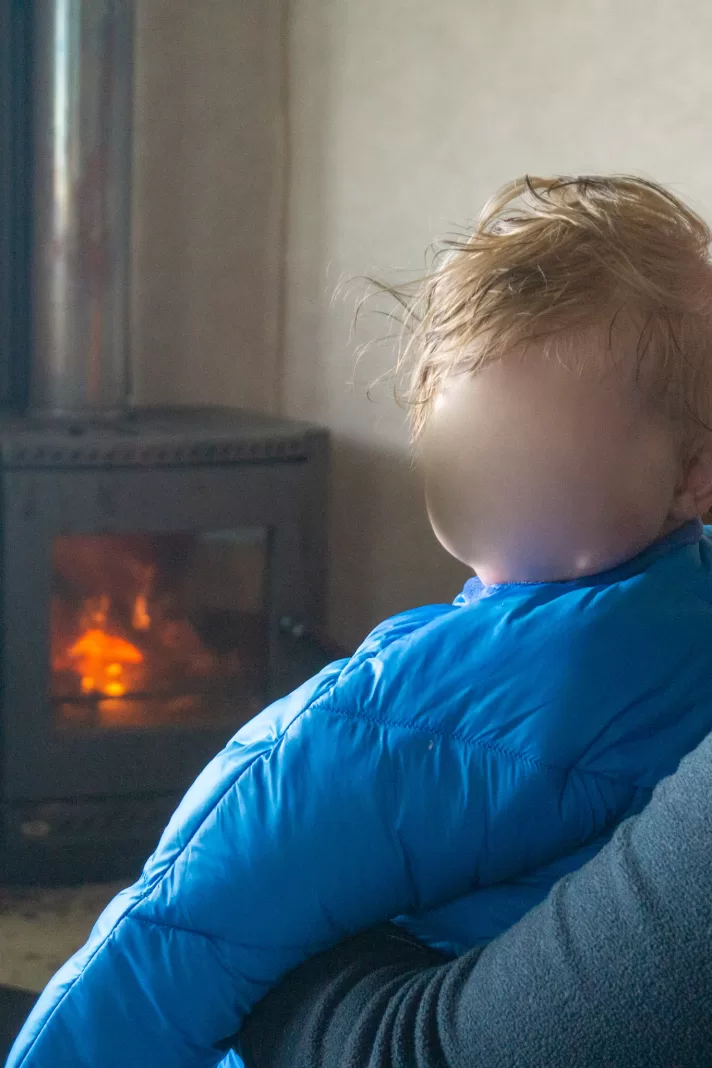
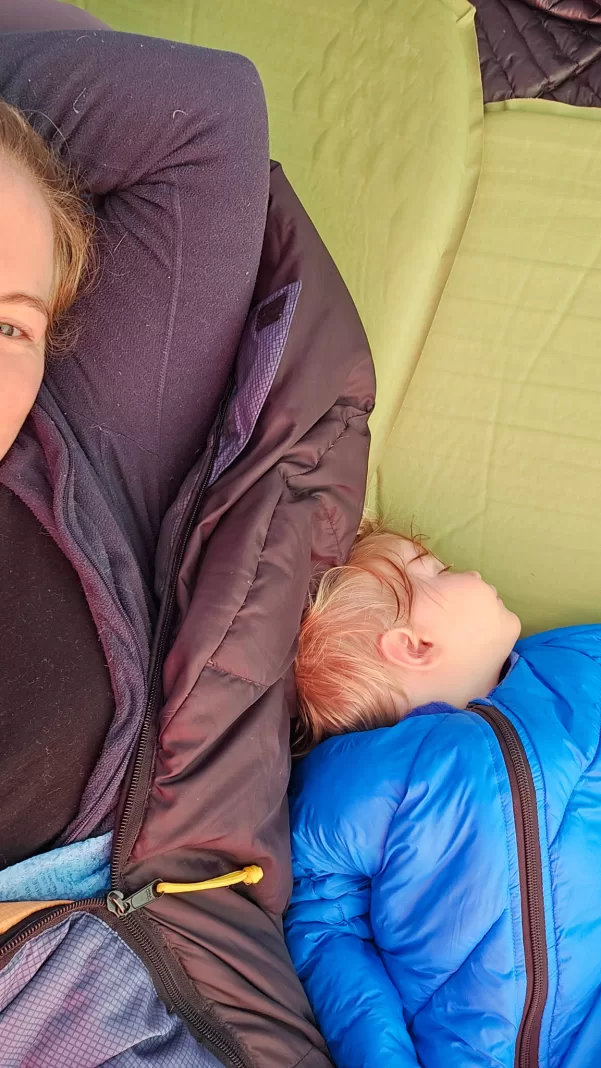
How does baby sleep in a hut?
I’ll be honest, not well, but not much worse than at home either! The first time A slept through the night was actually at Aspiring Hut! The mountain air not only makes them more hungry but it can tire them out too.
I was worried that we might disturb other people in the hut at night (A was never a great sleeper in that first year), but it was actually fine. I could easily resettle A if she woke in the night by feeding her back to sleep. So while I definitely got less sleep, the other people in the hut would mention they hadn’t heard a thing!
We use white noise at home, and I took a small, portable machine with us to help the transition to an unfamiliar sleeping space. Making sure baby had some time to adjust to the new environment in daylight was also helpful. At Siberia Hut we arrived at 8pm and A took a lot longer to settle that evening since it was a new space. She hadn’t had much time to get comfortable with it before I was expecting her to fall asleep.
Keeping with the honesty, now that I’ve weaned A – I’m worried how hut stays will go. I no longer have the magic power to soothe her back to sleep (although feeding was starting to loose its magic a little anyway). And she’s just so much more alert and aware. We’ll see how things go now that she’s officially a toddler!
Safety considerations
Tramping is a risky activity yes, but so is travelling in a vehicle and we do that most days without even thinking. If you’ve been a tramper before having kids, you’ll likely already know many of the ways we minimise risk in the outdoors, but if you’re new or want a refresher, here are some considerations when it comes to tramping safely.
Land Safety Code
Following the Land Safety Code is a great start to reducing risk in the outdoors. I have an entire blog post about it that I’d strongly recommend you read if you’re starting out – How to Stay Safe in the Outdoors.
In short:
- Choose the right trip for you
- Understand the weather
- Pack warm clothes and extra food
- Share your plans and take ways to get help
- Take care of yourself and each other
Weather
This deserves its own paragraph as it’s one of the biggest risk factors in my opinion. Pre-kids you might have been tempted to push through than incoming front, or head out in marginal conditions. However with a baby you’ll have to wait until conditions are good, you just can’t risk them getting too cold or wet. Good gear like merino clothing and a tarp helps, but there’s only so much gear can do when you’re having to stop often for feeds or nappy changes in the pouring rain or freezing conditions.
Personal Locator Beacon
Always take a PLB or a satellite communicator (e.g. Garmin InReach or Zoleo). You can’t risk being caught in an emergency situation without any means of communication. You can rent PLBs from most locations, check out the list here.
What trips to choose
Start easy and build-up.
For my first overnight hut stay with little adventurer, I was a princess and had a list of requirements including 4WD access. Driving in meant I didn’t have to stress about fitting everything into a pack, and also meant we could bail really easily if things went pear-shaped.
The next hut was only a half hour flat walk, the third a longer walk with some snow and elevation, and the fourth involved helicopter access and an eight hour scramble up and down steep terrain (things escalated quickly). Then I felt able to go on a wild camping trip up above the bushline. None of this came naturally to me, it was hard-won experience and confidence that I slowly gained the more I did.
Some factors you might want to consider when choosing your first overnight trip:
- How far / difficult is the track?
- How easy is it to turn around and leave if needed?
- Are you familiar with this track / have you done it before?
- How popular is the track / how busy will the hut be?
- Is the hut bookable, or first-come, first-served?
- Does the hut have heating?
- What style of bunks are there? (e.g. separate bunkrooms? platform or single bunks?)
- How old will your little one be and what season will it be?
- Will there be any sandflies?
- How close to home is it (i.e. how far will you have to drive)?
- Who is available to support you on your trip? I’ve been lucky enough to have my dad come on every single overnight hut trip in A’s life so far! You can definitely do it solo, but it’s easier with others.
Sonia from Back to the Wild has some AMAZING tramping journals for kiddies which list a whole heap of family friendly tramps and huts. There is a South Island journal, as well as one for the North Island. Honestly, they’re a fantastic gift for an adventure family and are a great resource of ideas for adventures you can take your kids on. Highly, highly recommend!
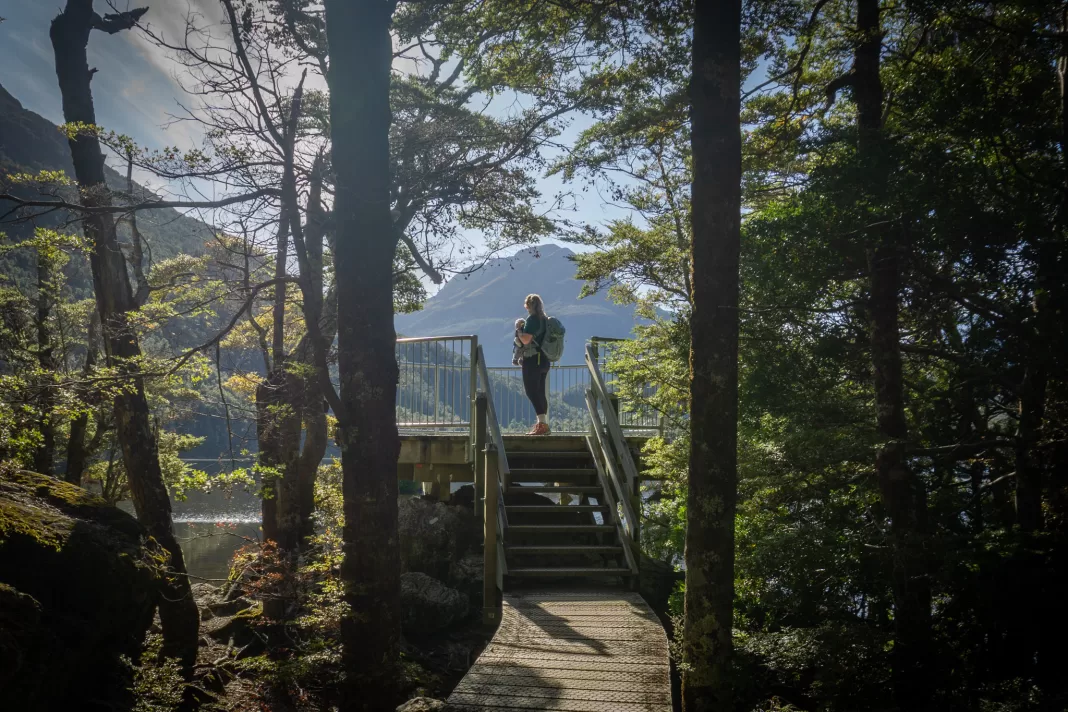
How to manage people’s reactions when you’re tramping with a baby
I’ve only ever had positive experiences with strangers both when tramping and travelling overseas with a baby. Most people have gone out of their way to be courteous, and nobody has ever said an unkind comment to my face.
Huts are public places. Infants and children have just as much right to be there as adults! Don’t let someone who feels entitled to a childfree experience make you feel unwelcome in a public space – they could have always booked out the whole hut or chosen a hut that was less kid friendly if they wanted, but they didn’t. Most adults remember that they were once children, or they’ve spent time around young children, so they get it. And if they don’t – it’s their problem, not yours.
But, in saying that, I do think we owe our fellow hut-mates the courtesy of respect – the same general respect that we expect from them. So practice good hut etiquette as much as you can (don’t be the family who bathes their baby in the sink!). This means not spreading your gear out everywhere, making way for people, and minimising disturbances as much as you can. Staying quiet isn’t always possible with a baby, so just remember that babies aren’t being ‘naughty’ – if they’re crying it’s because it’s their only way to communicate a need.

I hope this article has helped answer some questions you might have had about tramping with a baby. It’s definitely a challenge, but it was worth it for me to get back out into the hills with my little one. I hope it is for you too!
If you have more questions or would like to know more, comment below or message me over on Instagram. I always love chatting about tramping so please drop me a line!
Stay safe and get outside!
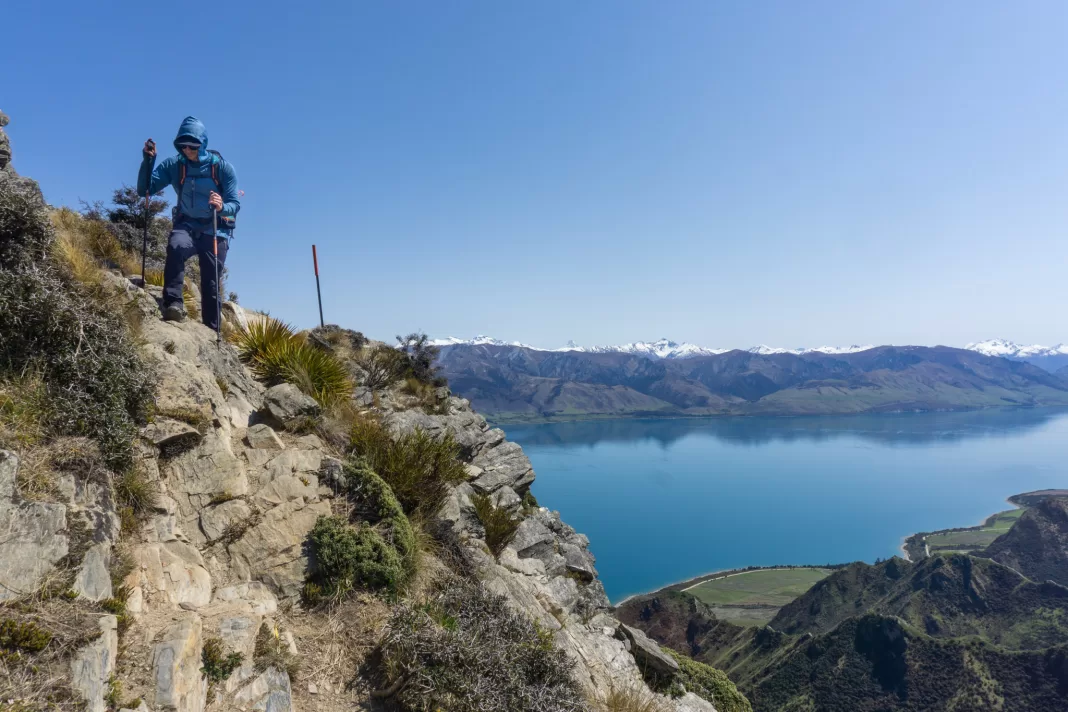
Tramping 101
All the tips, tricks and knowledge you need to get started with tramping.

How to stay safe tramping
Do you know the principles of the Land Safety Code? The 10 Essentials? Leave No Trace? If not, you need to read this.
